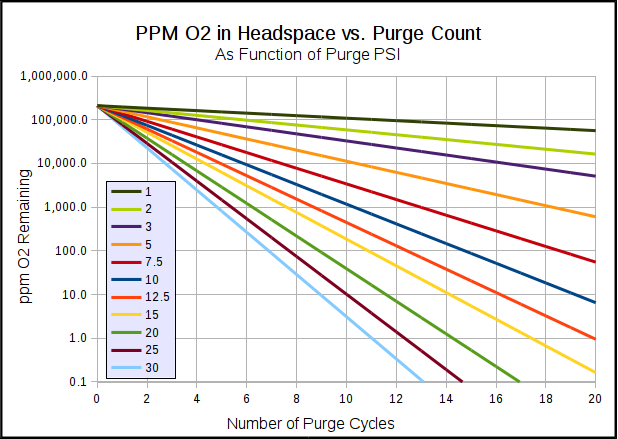moreb33rplz
Well-Known Member
- Joined
- Mar 25, 2014
- Messages
- 685
- Reaction score
- 379
Looking for a sanity check on my process - kegged my first batch ever this AM.
I have a 5 lb tank, 2.5 gal corny, tap right (?) regulator. I disassembled the keg (lid, 2 posts, dip tube) and soaked it all plus keg in PBW overnight. Dumped and rinsed. Refilled with starsan.
- Pulled out my fermenter and racked into keg.
- Hooked up regulator to tank
- Gas line to tank
- Gas line to keg
- opened valves on tank and regulator to about 15-20 psi (I forget) and heard it make noises for a few seconds
- burped the keg with PRV a couple three times
- while at 15-20 psi I moved the keg and tank into my fridge
I think this is right, guess my biggest question is was it ok with temps, ie, the tank was warm, the keg was warm, the beer was cold (I cold crashed it last 2 days), then stuck it all in the fridge. That ok? Also realize I should lower the pressure to 12 psi when I get home.
Thanks!
I have a 5 lb tank, 2.5 gal corny, tap right (?) regulator. I disassembled the keg (lid, 2 posts, dip tube) and soaked it all plus keg in PBW overnight. Dumped and rinsed. Refilled with starsan.
- Pulled out my fermenter and racked into keg.
- Hooked up regulator to tank
- Gas line to tank
- Gas line to keg
- opened valves on tank and regulator to about 15-20 psi (I forget) and heard it make noises for a few seconds
- burped the keg with PRV a couple three times
- while at 15-20 psi I moved the keg and tank into my fridge
I think this is right, guess my biggest question is was it ok with temps, ie, the tank was warm, the keg was warm, the beer was cold (I cold crashed it last 2 days), then stuck it all in the fridge. That ok? Also realize I should lower the pressure to 12 psi when I get home.
Thanks!





























































